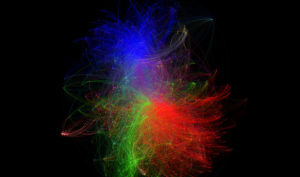
TigerGraph Offers Graph Database Test Drive

TigerGraph, the startup that emerged last fall with a new native parallel graph database, released a free “developer edition” this week with the goal of giving potential users a test drive and a means of comparing the graph analytics platform with competitors like Amazon Neptune and Neo4j.
TigerGraph, Redwood City, Calif., is betting graph analytics are poised to move into the mainstream as enterprises look for new ways to scale the process of gleaning value from “connected data.” TigerGraph’s scalable graph analytics database combines massively parallel processing with an SQL-like graph query language.
The graph database is touted as capable of loading terabytes of data in a few hours while the GSQL allows the writing of complex analytics queries. Unlike traditional graph databases, the startup claims its approach can scale real-time “multi-hop” queries to trillions of relationships.
Native graph databases store data as graphs, unlike other graph platforms that run on top of Hadoop and NoSQL. Neo4j, for example, is designed to store data as nodes with connections expressed as edges. TigerGraph said it supports trillions of edges and vertices that along with GSQL enable complex queries.
“By storing data in a graph format, including nodes, edges and properties, graphs overcome the big and complex data challenges that other databases cannot,” Yu Xu, TigerGraph’s CEO and founder, wrote on Datanami last fall.
Other proponents of the technology note that graph databases are making inroads in key areas such as financial technology where real-time intelligence tools are being used for risk management and trading.
Along with Neo4j and TigerGraph, other entrants include Amazon Web Services (NASDAQ: AMZN), which unveiled its Neptune graph database last November. Neptune provides two graph database models and two ways to write graph database queries, including property graphs and entity graphs. Property graphs are enabled through Neptune’s support for Apache TinkerPop and the Gremlin graph-traversal language.
TigerGraph, whose customers in include China Mobile (NYSE: CHL), Uber and Visa (NYSE: V), said Tuesday (June 12) its developer edition can be downloaded here.
Meanwhile, the startup has joined competitors in calling for a standard graph query language. An international standard would help accelerate enterprise adoption of the emerging database platform while helping to alleviate the shortage of proficient graph database developers, Yu Xu noted in a recent blog post.
Recent items:
TigerGraph Emerges with Native Parallel Graph Database
The Motivation for Native Graph Databases
A Look at the Graph Database Landscape



























